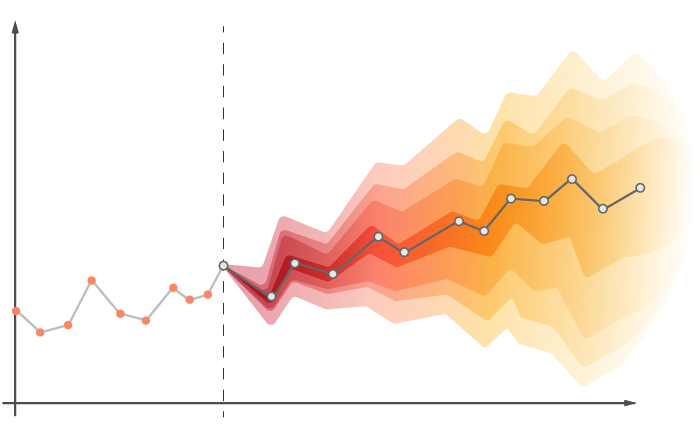5 Challenges for Supply Chain Forecasting
- Connie Golden
- Jun 24, 2021
- 4 min read

Why Do You Need Demand Forecasting?
Like any planning aspect of any business process, forecasting plays a crucial role in the smooth functioning of your end-to-end supply chain. First and foremost, customer satisfaction relies on your forecasting abilities, since the more accurate your production runs are, the faster you will be able to fulfill orders and keep your customers happy. Now think about your inventory carrying costs. The closer you can get to equity in incoming supplies vs outgoing orders, the less excess inventory you will be paying to store in your warehouses. Along the same lines, accurate supply chain forecasting enables better optimization of resources. The closer you can get production levels to capacity, the less machine and employee downtime you’ll encounter. Forecast accuracy also affects over and under runs in production, lowering time, and resource waste even further.
Challenge #1: No Forecasting System
A spreadsheet, a calculator, and speculation is not a solid demand forecasting toolset. This lack of preparation will most likely lead to cost overruns, underproduction of in-demand items, or worse. If you’re still relying on these outmoded methods of supply chain forecasting, it’s time to upgrade to a solution that integrates the advanced analytics that you need to gain a foothold in today’s market. Bringing your forecasting into the 21st-century will bring with it further benefits, chief among them being the ability to integrate all of your supply chain management into one intuitive software suite.
Challenge #2: Legacy Systems
If your company ditched the spreadsheets and calculators years ago, you may not be out of the woods yet. Say your production facility is fully Industry 4.0-enabled, with sensors sending real-time data to your supply chain management dashboard for instant analysis, but your warehouse is still relying on a spreadsheet and manual data entry to navigate where orders are shelved. Under these circumstances, your forecasts will remain a sticking point. If you just don’t have the budget to fully upgrade to a modern inventory tracking system, don’t worry. There are some great workarounds that will have a huge impact on your forecasting accuracy while allowing legacy systems to remain in place for the time being. Many systems include APIs (application programming interfaces) that will allow your supply chain management systems to pull the information needed to generate that forecast. Robotic process automation (RPA) bots can also be programmed to take over the data entry, along with the steps necessary to move that data over for the same results even if your legacy system doesn’t have API access.
Challenge #3: Incomplete or Siloed Data
No matter how integrated your systems are, if someone is holding onto data rather than ensuring its inclusion in those systems, you’re still going to be falling short of your peak demand forecast accuracy. Overcoming this supply chain forecasting challenge will require a personal touch, as you’re going to need to meet one-on-one with the stakeholders you feel may be holding out on you. It might very well turn out that the issue is a spreadsheet that nobody realized contained crucial information for your forecasts. Or it may be that a single manager somewhere along the value chain was literally holding the needed information in their head. Once you locate the siloed data, it’s time to work on a plan to get it into the data flow so your forecast can reap the benefits.
Challenge #4: Lack of Stakeholder Buy-in
If one stakeholder feels slighted and doesn’t buy into the improvements you are working to implement, it’s likely up to you to bring them into the fold. Similarly, if several of your stakeholders are involved in an interdepartmental scuffle, maybe around who has the rights to access certain data that they see as proprietary, there will likely be some debating in your future. The outcome of those meetings will be well worth it, because once you have all the relevant data flowing into your forecasting tools you will see immediate gains in accuracy. Practice your best impartial-mediator voice and get the ball rolling to locate and liberate the data you need to get the supply chain forecasting accuracy you are looking for.
Challenge #5: Lack of a Unified Solution
We saved the best for last. At the end of the day, no amount of one-on-one meetings or stakeholder mediation will really matter if you don’t have a full-featured supply chain management solution to feed all of your supply chain data into. Deploying a solution that can handle all the segments of your chain and maintain the data flows you need is the single biggest thing you can do to improve your forecasts. Look for a toolset that either includes the functions you need out of the box, or one that is extensible and scalable so you can add modules as you grow and integrate more segments of your value chain. Putting this vital piece of infrastructure in place ASAP is the best thing you can do for your demand forecasting efforts.
Contact us to find out how we can help with your supply chain forecasting.



Comments